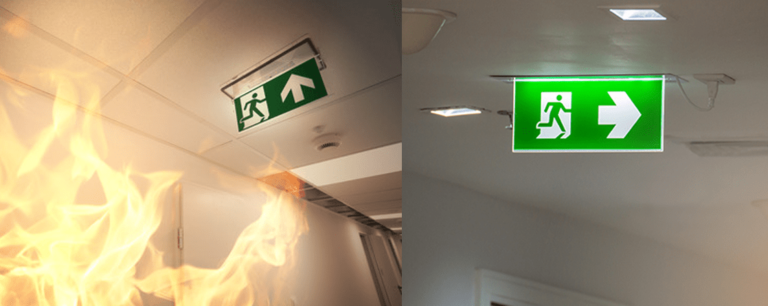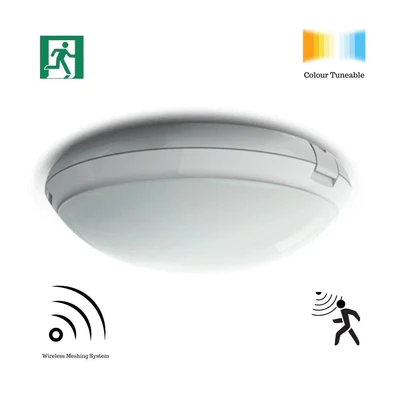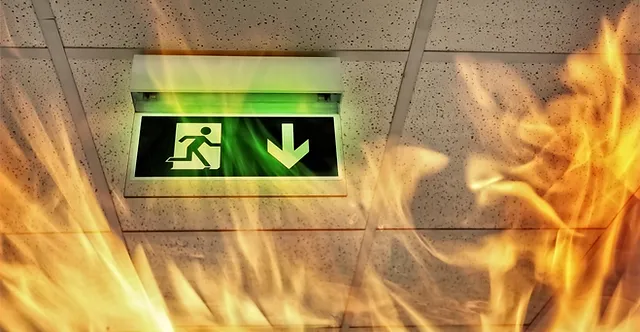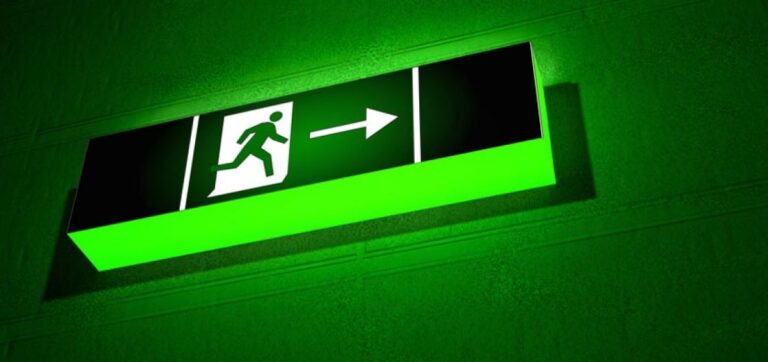Introduction to Emergency Lighting
Emergency lighting is essential for safeguarding building occupants during emergencies. When the primary power source fails, emergency lighting delivers illumination, facilitating safe evacuation or the continuation of operations.
In Sydney, Australia, emergency lighting systems must adhere to the Australian Standard AS/NZS 2293.

Types of Emergency Lighting
Three primary types of emergency lighting exist:
- Escape route lighting: lights up paths for secure evacuation.
- Open area lighting: also called anti-panic lighting, helps avert panic in open spaces.
- High-risk task area lighting: offers light for the safe termination of hazardous processes or equipment.
Why Upgrade Your Emergency Lighting System?
Emergency lighting upgrades can enhance safety, fulfill regulatory requirements, and boost energy efficiency.
Upgrading an outdated system guarantees its functionality and reliability during emergencies.

Process of Upgrading Your Emergency Lighting System
The process of upgrading your emergency lighting system involves evaluating the existing system, planning the upgrade, executing the changes, and performing maintenance and testing.
Assessing Your Existing System
First, assess your current emergency lighting system.
Identify any shortcomings and areas needing improvement. Determine if your system complies with the latest Australian Standards.
Planning the Upgrade
Proper planning is crucial for a successful emergency lighting upgrade.
This involves:
Selecting the Right Emergency Lighting
Choose the appropriate type and number of emergency lights based on your building’s layout and requirements. Consider using energy-efficient LED lights.
Compliance with Australian Standards
Ensure the planned upgrade complies with the AS/NZS 2293 standard.
Consult with a qualified professional to verify compliance.
Budgeting
Create a budget that encompasses the cost of equipment, installation, and any necessary permits or approvals.

Implementation
Hiring Qualified Professionals
Engage a licensed electrician experienced in emergency lighting upgrades.
They can help guide you through the process and ensure seamless installation.
Scheduling the Upgrade
Schedule the upgrade at a time that minimizes disruption to your operations.
Maintenance and Testing
Routine maintenance and testing are vital for the continued functionality of your emergency lighting system.
Australian Standard AS/NZS 2293 mandates periodic inspection and testing.

Advantages of Emergency Lighting Upgrades
Upgrading your emergency lighting system offers several benefits:
Enhanced Safety
An upgraded system delivers reliable illumination during emergencies, reducing the risk of accidents and injuries.
Energy Efficiency
Contemporary emergency lighting systems, such as LED lights, use less energy and have a longer lifespan than traditional lighting options, lowering energy consumption and maintenance expenses.
Regulatory Compliance
An upgraded emergency lighting system ensures compliance with the latest Australian Standards, helping you avoid fines and penalties.
Conclusion
Upgrading your emergency lighting system in Sydney is crucial for ensuring the safety of building occupants, adhering to regulatory requirements, and improving energy efficiency.
By assessing your current system, planning the upgrade, implementing changes with the assistance of qualified professionals, and conducting regular maintenance and testing, you can enjoy the benefits of a dependable and efficient emergency lighting system.
Frequently Asked Questions (FAQs)
Emergency lighting offers illumination when the main power supply fails, allowing for safe evacuation or continuation of operations during emergency situations.
The three primary types of emergency lighting are escape route lighting, open area lighting (anti-panic), and high-risk task area lighting.
The Australian Standard AS/NZS 2293 applies to emergency lighting systems in Sydney and across Australia.
Upgrading your emergency lighting system can enhance safety, improve energy efficiency, and ensure compliance with the latest Australian Standards.
The Australian Standard AS/NZS 2293 requires periodic inspection and testing of emergency lighting systems.
Consult the standard or a qualified professional for specific testing intervals and requirements.



